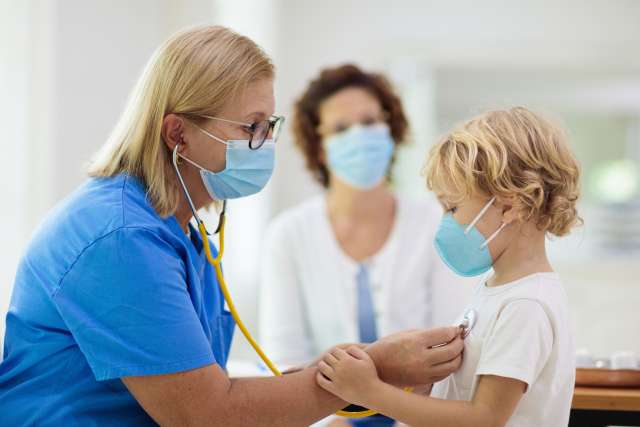Dear Doctors: My nephew is 12 years old and was diagnosed with hypertension. I was surprised because I didn't realize this could be a problem for kids his age. I don't remember having my blood pressure checked as a kid. What information do you have about this?
Dear Reader: No matter someone's age, blood pressure plays an important role in good health. Living with hypertension, which is chronic high blood pressure, puts you at increased risk of developing a wide range of diseases and conditions. These include heart disease, heart attack, heart failure, stroke, kidney disease, eye problems, vision loss and changes to cognition. High blood pressure is known to increase the risk of microvascular disease. This is a type of heart disease that affects the smallest arteries that serve the heart. It can also lead to peripheral artery disease. This is a narrowing of the arteries that serve the legs, arms, stomach and head.
When someone develops hypertension as a child or teen, it greatly magnifies their risk of the condition following them into adulthood.
Tracking blood pressure in children can be a bit of a challenge. That's because the “normal” range depends on the child's age, height and sex. Accurate measurement also requires equipment that is sized and calibrated specifically for use in children. Once a child passes from adolescence and into early adulthood, another set of blood pressure metrics begin to apply.
As with adults, hypertension in children falls into two distinct categories. The most common is primary hypertension, also known as essential hypertension. This is high blood pressure that has no clear cause. The other category, known as secondary hypertension, arises due to an underlying disease or condition.
Health care providers use a person's medical history and family history to narrow down potential causes. Those findings can lead to additional blood and lab tests to help identify the cause.
At this time, the American Heart Association estimates that 2% to 5% of children in the U.S. are living with high blood pressure. That jumps to 25% among children who are overweight or obese. Research also shows that up to 75% of children living with hypertension go undiagnosed. Because the condition is often asymptomatic, the AHA now recommends that blood pressure readings be included in a child's regular physical exams. Also, it takes more than a single elevated reading to establish a hypertension diagnosis. The AHA recommends using data from multiple readings, sometimes taken over the course of several months, for an accurate diagnosis.
Treatment typically begins with lifestyle changes. This includes reaching a healthy weight, adding exercise to daily life and sticking to a healthy diet. Unfortunately, vaping is now an issue, even among younger children, and must also be addressed. In some cases, it is possible that medications may be recommended.
If your child's health care provider isn't checking their blood pressure, don't be afraid to ask. Half of adults in the U.S. are living with hypertension. It's never too soon to start managing the problem.
(Send your questions to askthedoctors@mednet.ucla.edu, or write: Ask the Doctors, c/o UCLA Health Sciences Media Relations, 10960 Wilshire Blvd., Suite 1955, Los Angeles, CA, 90024. Owing to the volume of mail, personal replies cannot be provided.)





